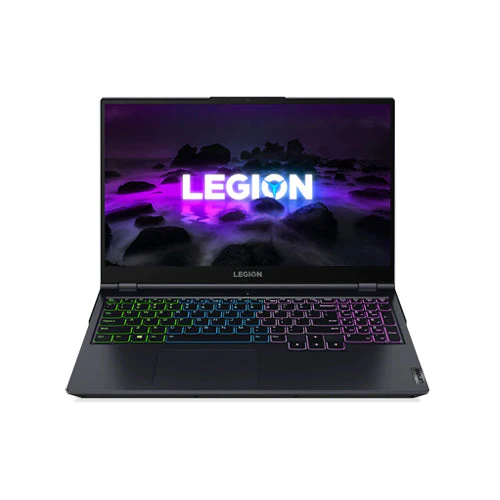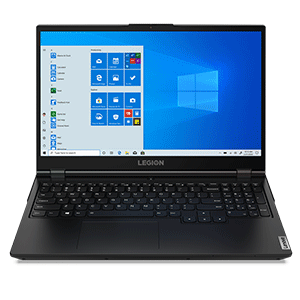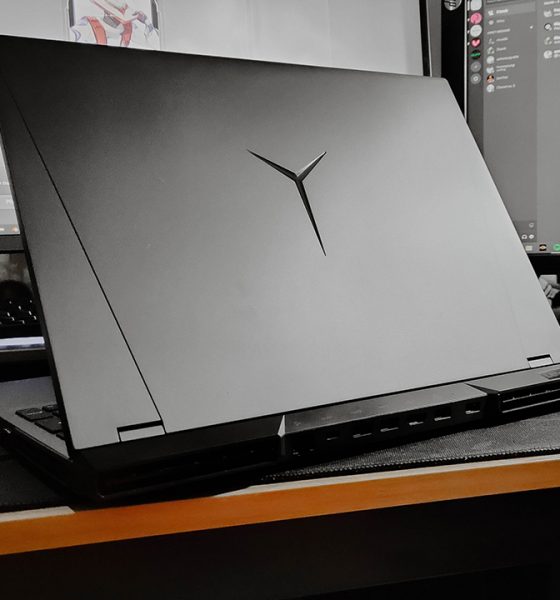Lenovo Legion 5
Retail Price
$1039.99
Lowest Price
$729
Release Date
December 2020
The Lenovo Legion 5 Pro offers powerful AMD and Nvidia technology, housed in a slightly bulky and drab chassis reminiscent of older gaming laptops. It features a spacious 16-inch QHD display with a 16:10 aspect ratio, outclassing its Intel competitors in multithreaded benchmarks. With an AMD Ryzen 7 5800H processor and Nvidia GeForce RTX 3070 graphics, it delivers excellent performance at an aggressive price point. While lacking the elegance of some competitors, it provides speed and value, making it a viable alternative to top gaming laptops like the Alienware m15 R4 and Acer Predator Helios 300 (2021). On the other hand, the Lenovo Legion 5 offers affordability and focuses on core components, including a GeForce RTX 3060, modern AMD Ryzen 5000 processor, and a fast 165 Hz display. The combination of the Ryzen 7 5800H processor and the 130W version of the GeForce RTX 3060 ensures high gaming performance. However, the automatic graphics switching can cause stuttering issues, and it is recommended to deactivate the hybrid graphics mode in Lenovo’s Vantage app if long battery runtimes are not a priority. While the Legion 5 offers useful power settings, the fans remain active even in the Eco mode, resulting in a noisy operation.
Purchase Links
Overview
- Summary
- Overview
- Overview - Features
- Overview - Worth
- Overview - Performance
- Recommendation
- Positive
- Negative

Derek Sullivan - Ultrabook Review
Build & Design
- Bottom
- Build - Versions
- Chassis
- Design
- Durability
- Hinge
- Internal Parts
- Lid & Logo
- Material & Color
- NVME Drive - AMD Variant
- Ports
- Processor
- RAM
- Storage
- Thickness
- Vents
- Weight
- Positive
- Negative

Andreas Osthoff - NotebookCheck

Dave2D

Dave2D

Derek Sullivan - Ultrabook Review

Matthew Moniz

Andreas Osthoff - NotebookCheck

Matthew Elliott - PCMag

r/GamingLaptops

Matthew Elliott - PCMag

Dave2D

Derek Sullivan - Ultrabook Review

Dave2D

ShortCircuit

Simon Ulrich Kam, Dave2D

Matthew Moniz

Andreas Osthoff - NotebookCheck

ShortCircuit

Matthew Elliott - PCMag

Andreas Osthoff - NotebookCheck
Display & Screen
- Brightness - Color
- Calibration
- Display
- Display - Screen
- Graphics
- HDR & Dolby Vision
- Matte Display
- Options
- Panel Upgrade
- Response Time - 50% Grey to 80% Grey
- Response Time - Black to White
- Screen Flicker
- Screen
- Positive
- Negative

Derek Sullivan - Ultrabook Review

Andreas Osthoff - NotebookCheck

ShortCircuit

Andreas Osthoff - NotebookCheck

ShortCircuit

Dave2D

Andreas Osthoff - NotebookCheck

Andreas Osthoff - NotebookCheck

Andreas Osthoff - NotebookCheck
Keyboard & Trackpad
- Arrow Keys
- Backlight
- Key Feedback
- Keyboard
- Layout
- Material - Deck
- Performance
- Touchpad/Trackpad
- Positive
- Negative

Derek Sullivan - Ultrabook Review

Derek Sullivan - Ultrabook Review

Dave2D
Speakers
- Speakers - Sound Quality
- Speakers - Dynamic Output
- Positive
- Negative

Derek Sullivan - Ultrabook Review
Webcam
- Bezels - Webcam
- Webcam - Image Quality & Features
- Positive
- Negative
Fan & Heat Management
- Cooling
- Fan Noise
- Heat Management
- Heat Management - Noise
- Heat - AMD Variant
- Temperature
- Thermal System
- Positive
- Negative

Dave2D
Battery & Charging
- Battery - Life, Rundown/Runtime
- Battery
- Charger
- Power Consumption
- Power Efficiency
- Positive
- Negative

Andreas Osthoff - NotebookCheck

ShortCircuit
Features
- Advanced Optimus
- Performance Modes
- Power Profile
- Software - Lenovo Vantage
- Wi-Fi
- Positive
- Negative

Derek Sullivan - Ultrabook Review

Derek Sullivan - Ultrabook Review

Derek Sullivan - Ultrabook Review

Andreas Osthoff - NotebookCheck
Performance & Specifications
- Benchmark - Cinebench R15
- Benchmark - PCMark 10
- Configuration - AMD
- DPC Latency - AMD
- Gaming Performance
- Gaming - Far Cry 5 - Tomb Raider - Horizon Zero - Rainbow Six: Siege
- GPU Performance - AMD
- GPU - Specifications
- Performance
- Performance - Adobe Photoshop
- Performance - AMD
- Performance - Gaming - AMD
- Performance - Multimedia
- Performance - Processor
- Performance - Specifications
- Performance - Stress Test
- Specifications
- System Noise - AMD
- System Performance - AMD
- Usage
- Versatility
- Positive
- Negative

Matthew Elliott - PCMag

ShortCircuit

Andreas Osthoff - NotebookCheck

Andreas Osthoff - NotebookCheck

Andreas Osthoff - NotebookCheck

Derek Sullivan - Ultrabook Review

Matthew Elliott - PCMag

Matthew Moniz

Matthew Moniz

Matthew Elliott - PCMag

Dave2D

Derek Sullivan - Ultrabook Review

Andreas Osthoff - NotebookCheck

Andreas Osthoff - NotebookCheck

Andreas Osthoff - NotebookCheck

Syed Hamza Tariq, ShortCircuit
Comparison
- AMD vs. Intel
- Comparison vs. Acer Nitro 5 & Comparison vs. ASUS TUF Gaming F15
- Comparison vs. Acer Predator Triton 300 SE, Comparison vs. Razer Blade 15 Advanced Edition, & Comparison vs. Alienware m17 R4
- Comparison vs. Acer Triton SE & Comparison vs. Alienware m17 R4
- Comparison vs. Legion Y540
- Comparison vs. Razer Blade 15 Advanced Edition
- Comparison vs. Razer Blade 15, Comparison vs. Alienware m15, Comparison vs. Ryzen Edition R5, & Comparison vs. Alienware m7 R4
- Positive
- Negative

Matthew Moniz

Andreas Osthoff - NotebookCheck

Matthew Elliott - PCMag

Matthew Elliott - PCMag

r/Lenovo

Matthew Elliott - PCMag

Matthew Elliott - PCMag
Price & Value
- Price
- Value
- Positive
- Negative
Miscellaneous
- General Specifications - Intel & AMD Variants
- Issue - Speakers
- Issue - Wi-Fi
- Maintenance
- Upgrade - AMD
- Variants - Intel
- Positive
- Negative

Andreas Osthoff - NotebookCheck

Khai Manh, Matthew Moniz

Derek Sullivan - Ultrabook Review

Andreas Osthoff - NotebookCheck






Comments